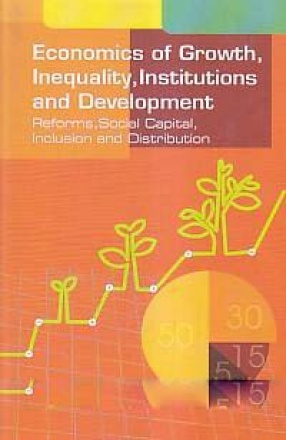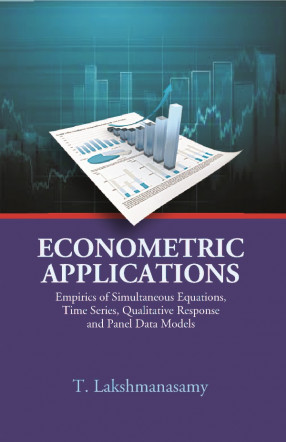Econometric Applications: Empirics of Simultaneous Equations, Time Series, Qualitative Response and Panel Data Models
Understanding human behaviour eludes scientific inquiries despite significant advances and great breakthroughs. Evenmore challenging is the quantitative analysis of human decisions for which econometric methods are widely applied. Econometrics analysis is the art of understanding the nuances of information contained in data and drawing meaningful inferences from the statistical techniques based on mathematical tools. Understanding the nature of data and identifying appropriate techniques for efficient and consistent estimates of the causal relationship is a great learning of a researcher that comes with practical experience only. The papers in this volume attempt to unravel the econometric issues of many economic problems. Using strong economic theories, rich data and powerful econometric methods, this book analyses the underlying data issues, identification of estimation methods, empirical analyses and draws inferences for many of the individual and household behaviours as well as state, national and international macroeconomic issues. The econometric methods that comprise this book are simultaneous equations methods, time series models, qualitative response dependent variable models and panel data methods. This volume demonstrates the comprehensive nature of econometric approaches that is at the heart of any empirical study and highlight the appropriateness of quantitative analysis for inferences from data, decision making and drawing policy implications. The book is intended to be a reference guide for a rigorous quantitative analysis of economic data and econometric applications.
Contents: Preface. Section – I: Simultaneous Equations Econometrics. 1. The Effect of Parental Education on Child Education: 2SLS-IV Estimation of Intergenerational Education Mobility. 2. The Relationship between Income and Nutrition: Non-parametric LOWESS and Parametric TSLS-IV Estimation of Calorie Intake from Cereals Consumption. 3. Gender Bias in Education Expenditure: 3SLS Estimation of Budget Share of Household Expenditure on Education of Children. Section – II: Time Series Econometrics. 4. The Effect of Volatility on Future Volatility: GARCH and EGARCH Estimation of Stock Prices and Stock Price Volatility Forecasts. 5. The Effect of FDI on Economic Growth and Domestic Investment: Vector Autoregression Estimation. 6. The Twin Deficit Hypothesis: Structural Vector Autoregression Estimation of the Relationship between Fiscal Deficit and Current Account Deficit. Section III: Limited Dependent Variables Econometrics. 7. The Effects of Birth Spacing and Maternal Education on Child Mortality: Probit and Logit Estimation of Child Survival in India. 8. Subjective Well-being, Money and the Easterlin Paradox: An Ordered Probit Estimation of Life Satisfaction. 9. Gender and Remittances: Probit and Tobit Estimation of Decision to Remit and Remittances Behaviour of Migrants. 10. The Demand for Children: Poisson Regression Estimation of Household Fertility Decisions. 11. Demand for Hospitalisation: Poisson-Logit Hurdle Estimation of Inpatient Care. 12. The Demand for AYUSH Healthcare: A Multinomial Logistic Regression Estimation of AYUSH Hospital Visits. 13. Sex Discrimination in the Labour Market: Heckit Estimation and Decomposition of Gender Wage Gap. 14. Economics of Religion: A Censored Regression Estimation of Religious Expenditure. 15. The Demand for Durable Goods: A Quantile Regression Estimation of Household Expenditure on Durable Goods Consumption. Section- IV: Panel Data Econometrics. 16. Fiscal Management and Government Expenditure: Panel Estimation of the Relationship between Fiscal Deficit, Interest Payment, Social Expenditure and Capital Outlay. 17. Rainfall and Farmer Suicides in India: Panel Estimation of the Effects of Monsoon Rainfall Deficit. 18. The Demand for Credit: Panel Conditional Fixed Effects Logistic Regression Estimation of Sources of Credit. 19. The Technical Efficiency of Commercial Banks: A Multiple Output-Multiple Input Technology Panel Stochastic Ray Frontier Function Estimation. References. Index.
Get it now and save 10%
BECOME A MEMBER
-

Population Dynamics and Human Development: Opportunities and Challenges (In 2 Volumes)
-

Economics of Household Non-Market Behaviour: Analysis of Household Relations and Decisions
-

Economics of Growth, Inequality, Institutions and Development: Reforms, Social Capital, Inclusion and Distribution
-

Applied Microeconometrics of Human Decisions







Bibliographic information